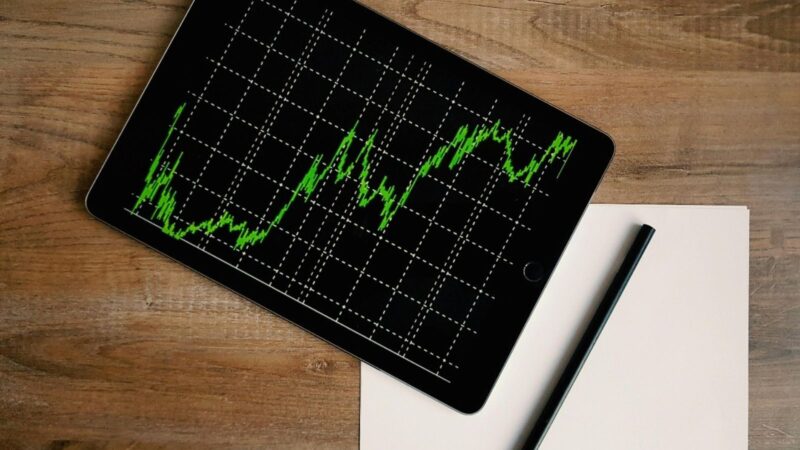
Money may not buy happiness, but it certainly buys freedom, and knowing how much of it you can safely spend is one of the hardest financial puzzles to solve. Maybe you’ve built your nest egg through years of investing, early crypto wins, or the steady rise of your business. Still, the golden question remains: how much can you withdraw and still sleep soundly at night?
As an American investor and philanthropist, Warren Buffett once said, “Do not save what is left after spending, but spend what is left after saving.” The same idea applies to your investments. Your spending should grow from a place of security, not speculation.
Investments You Can Actually Use
When most people think of investments, they imagine long-term holdings such as stocks, ETFs, and real estate. These assets are usually meant to sit tight and grow. But not all investments have to stay locked away for decades. Cryptocurrency, for instance, is both an investment and a functional currency.
Unlike traditional portfolios, where cashing out can take time, crypto lets you pivot between investing and spending instantly. Bitcoin, Ethereum, and other major digital currencies have turned into usable money across countless platforms. With it, you can go from buying coffee to booking holidays. One of the most creative uses has been in online entertainment, particularly leading bitcoin casinos, where digital assets double as gaming funds. According to casino expert Mark Hoover, there you can have the freedom to play anonymously, deposit within seconds, and withdraw in minutes when you win.
Crypto casinos lately have become well-known for their speed and accessibility. They’re not just for thrill-seekers, but they also showcase how digital wealth can be practical and fluid. People can enjoy their investments without turning them entirely into cash. In essence, crypto gives investors something that stocks never will, and that is the ability to spend while staying invested.
The Balance Between Growth and Withdrawal
Every investor faces a similar dilemma: when does spending become self-sabotage? The traditional approach to this question is the “4% rule.” Developed from decades of financial research, it suggests that if you withdraw 4% of your portfolio annually (adjusted for inflation), you’re unlikely to run out of money over 30 years.
For example, someone with a $1 million portfolio could safely spend around $40,000 a year. But this “safe withdrawal rate” assumes a limited time horizon, typically post-retirement. If you’re younger, say, in your 30s or 40s, that window stretches much longer, which means the sustainable withdrawal rate drops closer to 2.5–3%.
Of course, this isn’t a rigid formula. The markets fluctuate, your lifestyle changes, and inflation rarely stays quiet. Instead of obsessing over percentages, it’s more realistic to view withdrawals as a spectrum. They ought to be flexible, reactive, and aligned with your long-term goals. If one year brings strong investment growth, it might justify a slightly higher withdrawal. If markets tumble, pulling back on spending can help your portfolio recover.
This adaptability is where modern investors outperform older strategies. Digital portfolios, crypto assets, and diversified investments allow for dynamic rebalancing. The key is understanding that spending is about maintaining your financial ecosystem, so don’t overthink about numbers and percentages too much.
The Freedom Factor
The younger you are, the more freedom you have to adjust. Someone in their 30s or 40s who’s achieved financial independence can afford to spend a bit more aggressively than a retiree because they have time and skills to rebuild wealth if necessary.
Financial independence doesn’t mean you’ll never work again. Basically, it means you get to choose how and when you work. You can take a sabbatical, start a passion project, or freelance on your terms. That flexibility is your safety net. If markets dip or you overspend one year, a return to part-time income can stabilize things quickly.

This is why many financial planners argue that instead of asking “How much can I spend?” the better question is “How adaptable am I?” If you’re open to earning again or adjusting your lifestyle, your spending leeway grows. True independence lies in the ability to adjust without panic and to view money as a renewable resource.
What Spending Says About Meaning
Beyond math and models, the real purpose of wealth is to live meaningfully. Investments represent years of effort, discipline, and patience, so spending them should bring fulfillment, not fear. Before tapping into your portfolio for big purchases or experiences, it helps to ask yourself:
- Will this improve my quality of life or simply inflate my lifestyle?
- If I delay this spending for five years, what might I regret missing?
- How would I feel if market conditions forced me to scale back later?
Sometimes, the right spending decision isn’t about restraint but intention. If your portfolio supports your passions (traveling, helping family, launching creative projects), then your withdrawals become an investment in happiness. The only real danger lies in spending blindly without considering future security.







